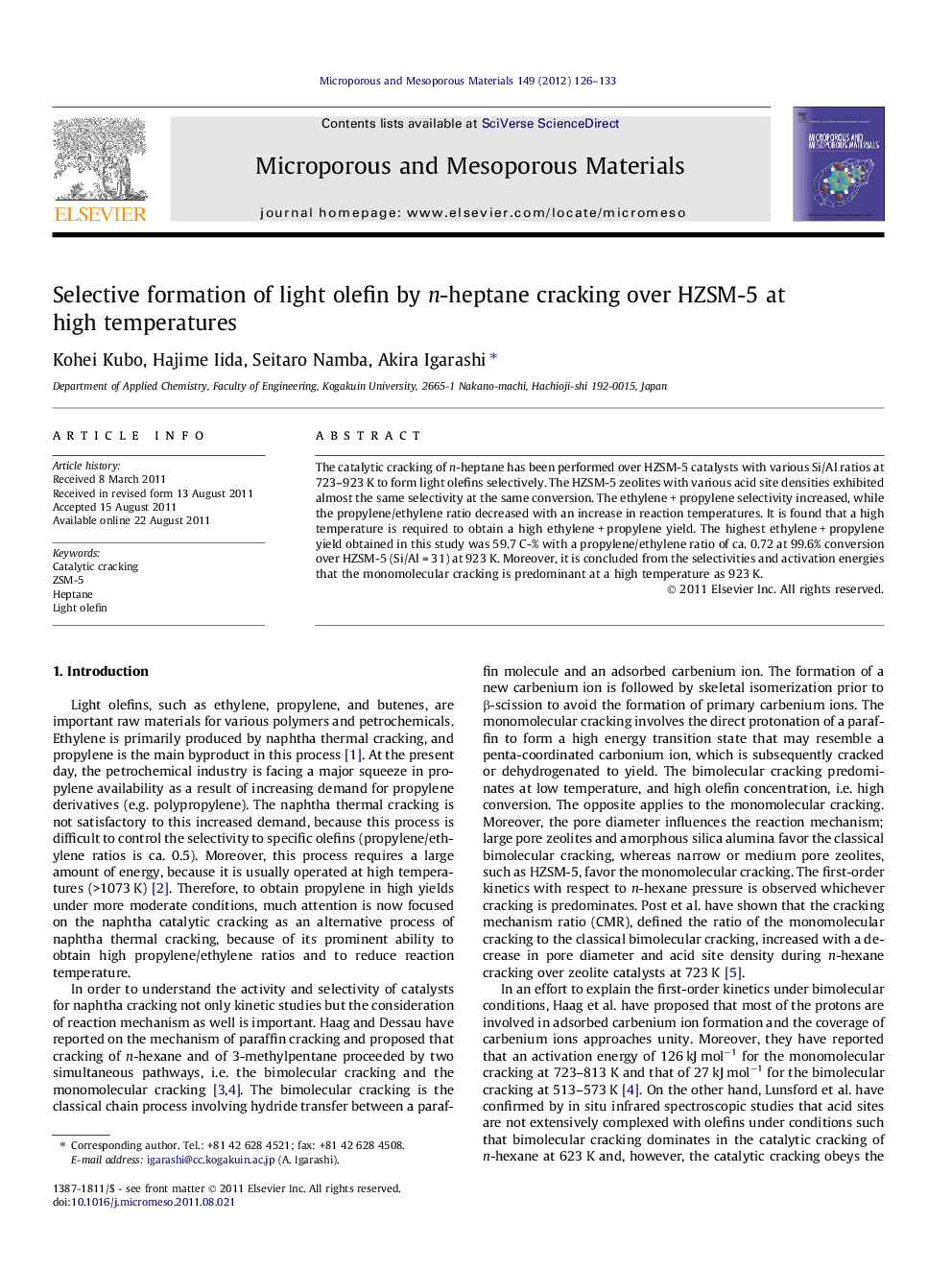| Article ID | Journal | Published Year | Pages | File Type |
|---|---|---|---|---|
| 74051 | Microporous and Mesoporous Materials | 2012 | 8 Pages |
The catalytic cracking of n-heptane has been performed over HZSM-5 catalysts with various Si/Al ratios at 723–923 K to form light olefins selectively. The HZSM-5 zeolites with various acid site densities exhibited almost the same selectivity at the same conversion. The ethylene + propylene selectivity increased, while the propylene/ethylene ratio decreased with an increase in reaction temperatures. It is found that a high temperature is required to obtain a high ethylene + propylene yield. The highest ethylene + propylene yield obtained in this study was 59.7 C-% with a propylene/ethylene ratio of ca. 0.72 at 99.6% conversion over HZSM-5 (Si/Al = 31) at 923 K. Moreover, it is concluded from the selectivities and activation energies that the monomolecular cracking is predominant at a high temperature as 923 K.
Graphical abstractThe highest ethylene + propylene yield obtained in this study was 59.7 C-% (a propylene/ethylene ratio of ca. 0.72) at 99.6% conversion over HZSM-5 (Si/Al = 31) at 923 K. This propylene/ethylene ratio is 1.4 times higher than that of the conventional thermal cracking.Figure optionsDownload full-size imageDownload as PowerPoint slideHighlights► Much attention is focused on the naphtha catalytic cracking to produce light olefin. ► We carried out the catalytic cracking of n-heptane at 723–923 K over HZSM-5. ► The monomolecular mechanism may be advantageous to form light olefins selectively. ► The highest C2= + C3= yield of 59.7% was obtained over HZSM-5 (Si/Al = 31) at 923 K.
